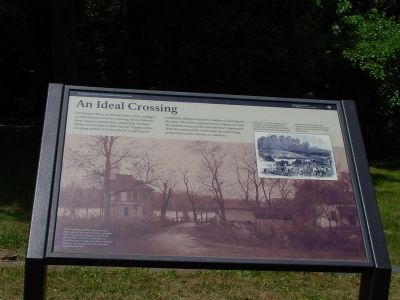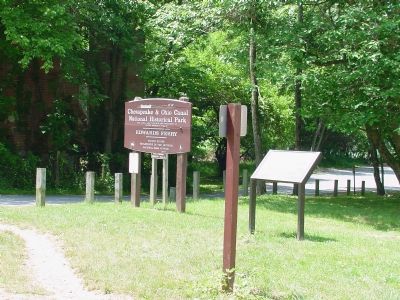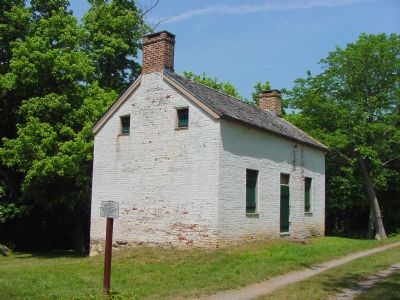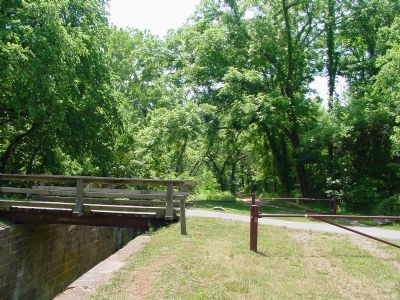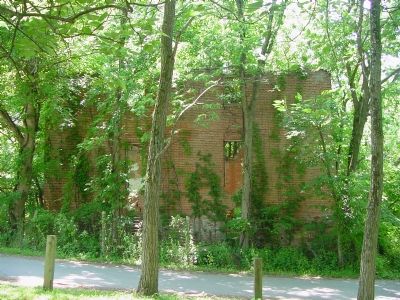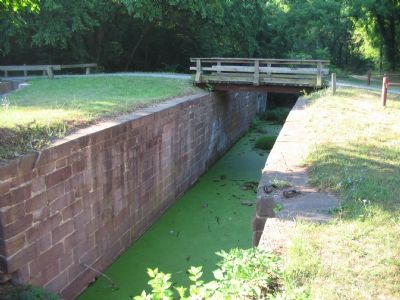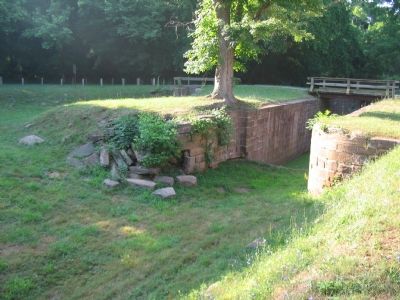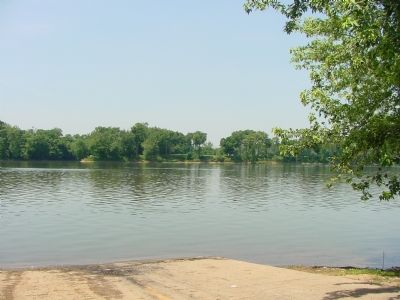Poolesville in Montgomery County, Maryland — The American Northeast (Mid-Atlantic)
An Ideal Crossing
(caption) During the Civil War, Edwards Ferry connected Union Maryland with Confederate Virginia. Harper’s Weekly depicted Union troops passing through Edwards Ferry in October 1861. Many troops and supplies from both sides crossed the river here throughout the war.
(caption) The crumbling Jarboe’s Store remains here today. It was a general store and post office operated by Eugene E. Jarboe in the late 19th and early 20th centuries. Flood damage in 1996 forced the National Park Service to partially tear down the unstable structure.
Erected by Chesapeake and Ohio Canal National Historical Park, National Park Service, U.S. Department of the Interior.
Topics and series. This historical marker is listed in these topic lists: War, US Civil • Waterways & Vessels. In addition, it is included in the Chesapeake and Ohio (C&O) Canal series list. A significant historical month for this entry is October 1861.
Location. Marker has been reported missing. It was located near 39° 6.222′ N, 77° 28.35′ W. Marker was in Poolesville, Maryland, in Montgomery County. Touch for map. Marker was in this post office area: Poolesville MD 20837, United States of America. Touch for directions.
Other nearby markers. At least 8 other markers are within 3 miles of this location, measured as the crow flies. At the Junction of War and Peace: (here, next to this marker); Edwards Ferry (within shouting distance of this marker); a different marker also named Edward’s Ferry (about 500 feet away, measured in a direct line); Potomac Connections (approx. 1.1 miles away in Virginia); Elizabeth Mills Riverfront Park (approx. 1.1 miles away in Virginia); a different marker also named Edwards Ferry (approx. 1.2 miles away in Virginia); Ice House (approx. 2.1 miles away in Virginia); Carriage House (approx. 2.1 miles away in Virginia). Touch for a list and map of all markers in Poolesville.
Regarding An Ideal Crossing. This marker has been replaced with the "At the Junction of Peace and War" marker.
Also see . . .
Chesapeake and Ohio Canal National Park. (Submitted on July 15, 2007, by Craig Swain of Leesburg, Virginia.)
Additional commentary.
1. Goose Creek Canal
Some two tenths of a mile downstream from Lock 25 and Edwards Ferry was the Goose Creek River Lock. This was designed to allow boat traffic to leave the canal, cross the Patomac, and enter Goose Creek. On that side of the river a similar set of locks were built to allow barge traffic into Loudoun County as far as Aldie, in theory. The Goose Creek Canal was chartered in 1832 with notables such as Charles Mercer and George Carter involved. After some twenty-two years, the project was still incomplete. Just over twelve miles were complete and the company was out of funds. Today one can still see the lock works about a half mile from the mouth of Goose Creek.
— Submitted August 17, 2007, by Craig Swain of Leesburg, Virginia.
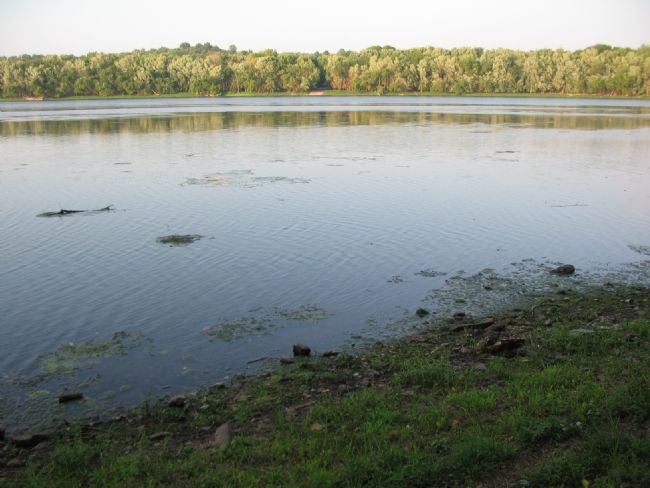
Photographed By Craig Swain, August 17, 2007
8. Edward's Ferry Seen from Virginia
The Elizabeth Mills Riverfront Park, part of the Loudoun County Park system, recently opened with a foot trail to the mouth of Goose Creek. Directly in the center along the Maryland shore is the boat ramp seen in photo nine below.
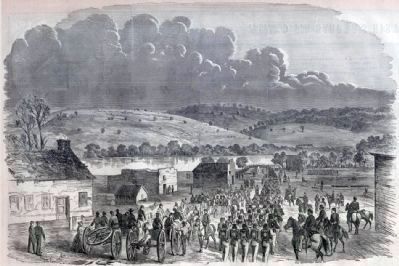
Photographed By Harper's Weekly, 1861
9. Our Army at Edward's Ferry,
on the Potomac, opposite Leesburg
on the Potomac, opposite Leesburg
During the Civil War, Edwards Ferry connected Union Maryland with Confederate Virginia. Harper’s Weekly depicted Union troops passing through Edwards Ferry in October 1861. Many troops and supplies from both sides crossed the river here throughout the war. Illustration from Harper's Weekly, November 9, 1861, page 710
Credits. This page was last revised on June 16, 2016. It was originally submitted on July 14, 2007, by J. J. Prats of Powell, Ohio. This page has been viewed 2,769 times since then and 46 times this year. Last updated on October 27, 2014, by Allen C. Browne of Silver Spring, Maryland. Photos: 1, 2, 3, 4, 5. submitted on July 14, 2007, by J. J. Prats of Powell, Ohio. 6, 7. submitted on July 15, 2007, by Craig Swain of Leesburg, Virginia. 8. submitted on August 17, 2007, by Craig Swain of Leesburg, Virginia. 9. submitted on October 29, 2014, by Allen C. Browne of Silver Spring, Maryland. 10. submitted on July 14, 2007, by J. J. Prats of Powell, Ohio. • Bill Pfingsten was the editor who published this page.
